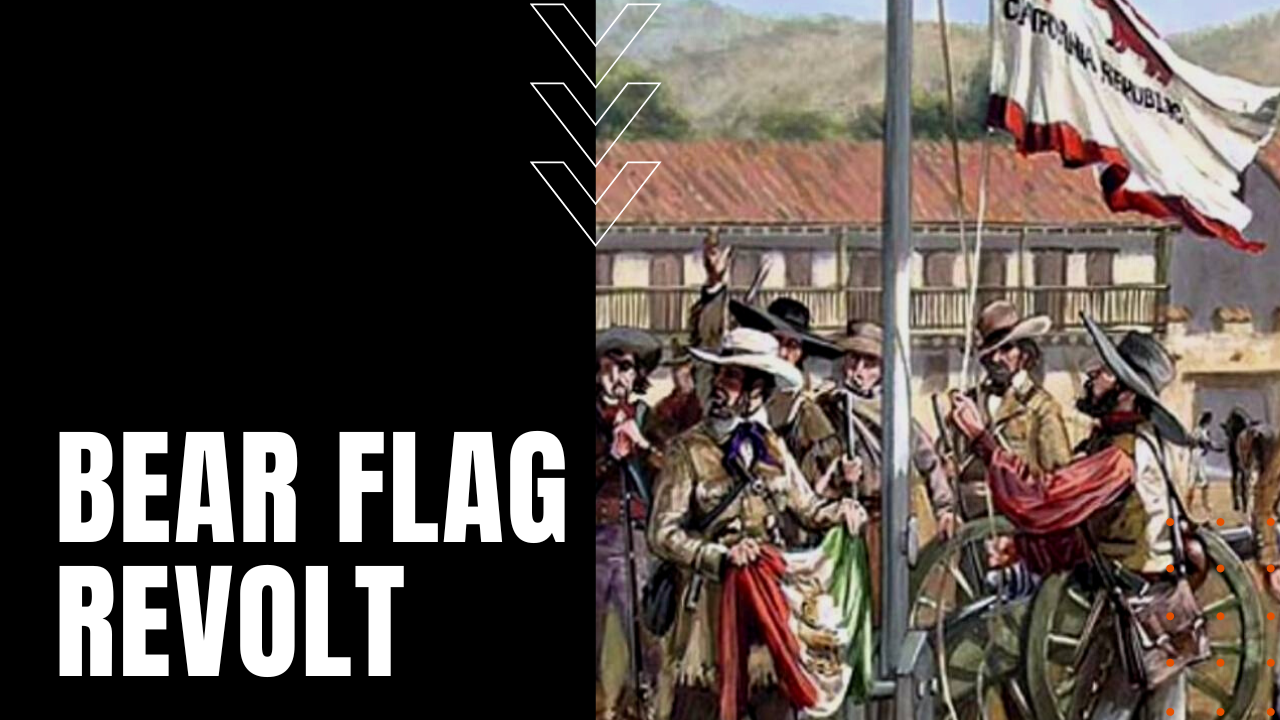Bear Flag Revolt

During America’s westward expansion under her growing allegiance to manifest destiny, European-American settlers began a steady march toward the Pacific, leaving residents living in the Mexican province of Alta California with a rising sense that their own government was too poor, unstable and weak to staunch the flow of foreign invaders.
Inspired By Republic of Texas
At the same time, beginning in 1835, Americans like Stephen F. Austin and Sam Houston led a rebellion in present-day Texas against Mexican rule, culminating eleven years later in the independent nation of the Republic of Texas, which in turn sparked the Mexican-American war of 1846, after land-grabbing President James Polk annexed Texas into the United States.
Nine months before war broke out in earnest, President Polk sent John Fremont, a captain in the U.S. Army Corps of Topographical Engineers, on an expedition to survey the Great Basin and the Great Salt Lake, at the same time secretly instructing the explorer and future politician to invade California if war was formally declared against Mexico, conveniently sending Fremont with a howitzer—just in case.
John Fremont Enters California
Entering California in December of 1845, Fremont and his men skirmished with Mexican authorities, and when Fremont learned that war had at last broken out with Mexico, on June 13th, 1946, he entered the Sonoma Valley with a ragtag group of settlers who had grown fearful that Mexican authorities would oust them from their land. After imprisoning Mexican General Mariano Vallejo at Sutter’s Fort, the general quickly offered up his terms of surrender.
The Bear Flag Revolt
Upon Vallejo’s bloodless capitulation, the Americans announced the foundation of the California Republic, hastily stitching together a flag with a lone star and a grizzly bear that comically looked more like a hog than a bear, raising the flag over the barracks at Sonoma to announce the newly-minted, independent nation of California.
Known as Bear Flaggers or Bears or Osos in Spanish, Fremont and his men engaged in further skirmishes with Mexican forces, while on July the 7th, the U.S. Navy’s Pacific fleet under the command of Commodore John Sloat seized Monterey, immediately claiming California as part of the United States.
Two days later, the Bear Flag Revolt ended when, for the most part, the marauding would-be revolutionaries came to their senses. California would ultimately be ceded to the United States in 1847, under the Treaty of Cahuenga.
